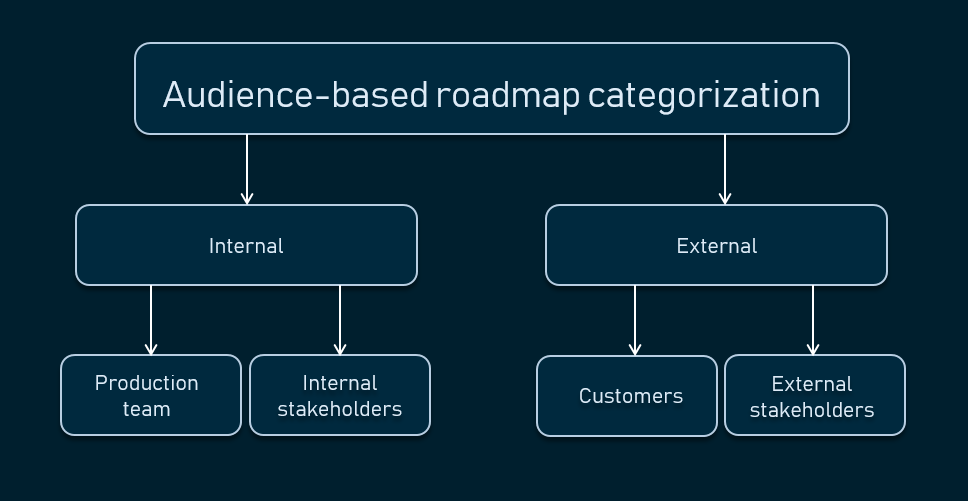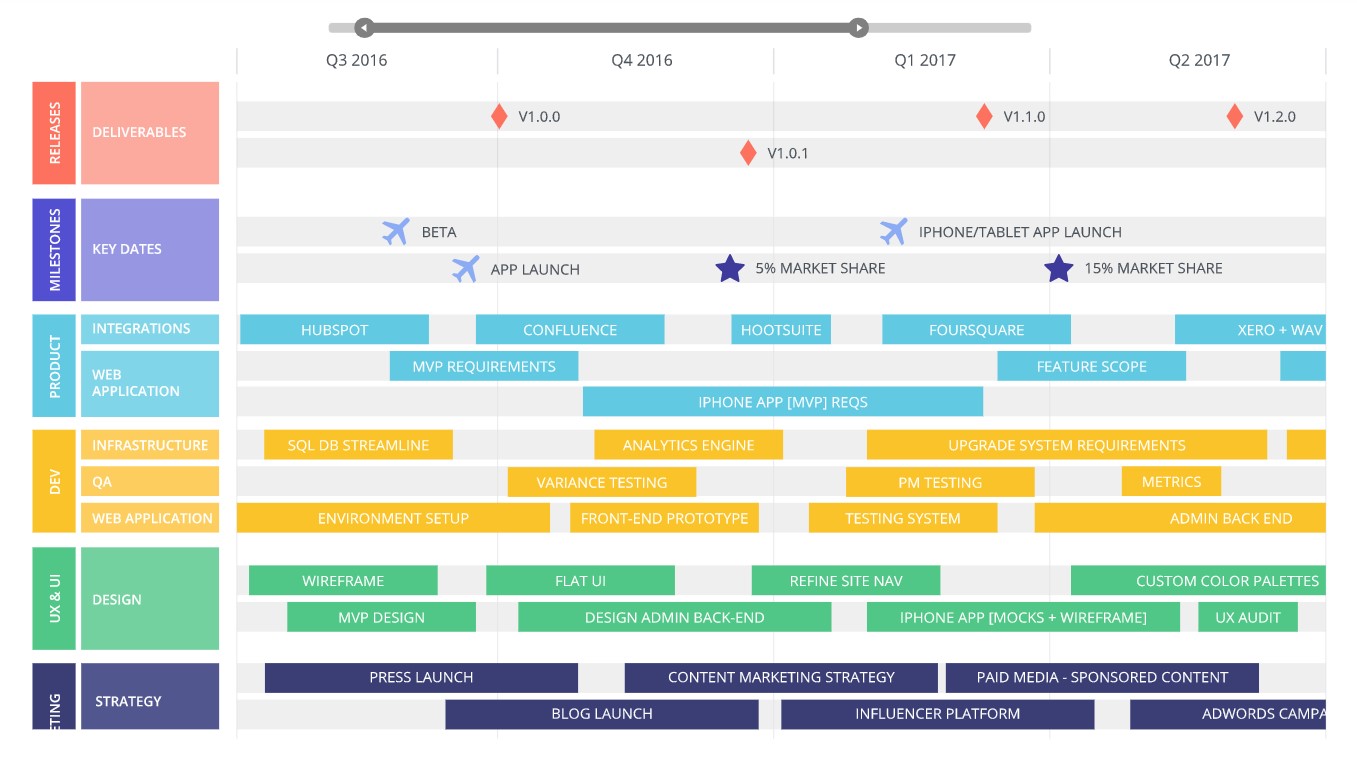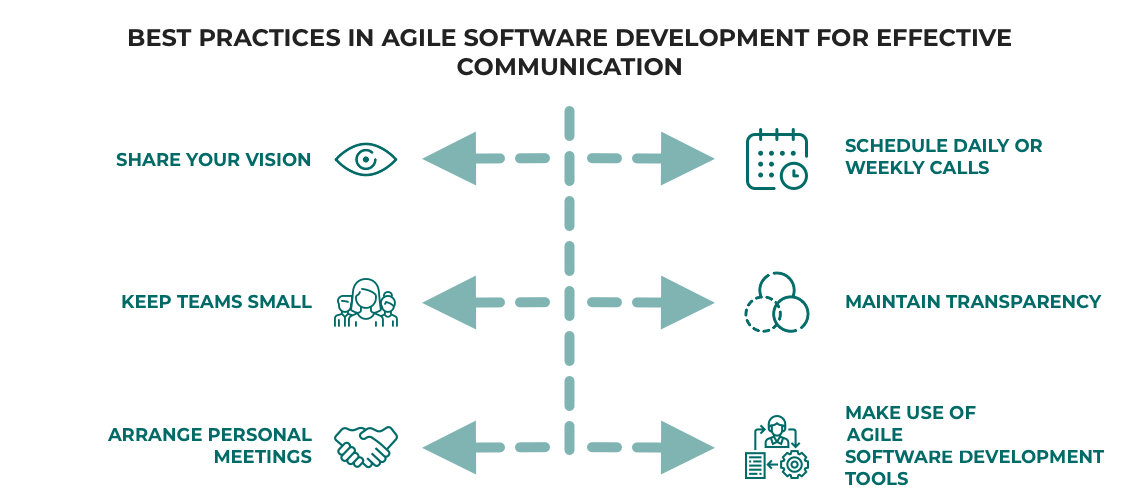Scoping Workshop - Plan and Tips for Scope Session in Software Projects
Scoping workshop provides an excellent opportunity to clarify the needs of the project, disclose areas that haven't been considered earlier...

A roadmap in terms of software development is a tool that provides a view of planned deliverables and the sequence of a software product or a project, effectively providing a glimpse of its future.
This article focuses on explaining what a Software Development Roadmap is, its advantages, the high-level process of building one, and valuable tools that exist to aid in creating software development roadmaps.
A roadmap is a high-level overview of a company’s vision and goals for its product over the next period. A software roadmap is designed specifically for a software development project. It’s the strategic plan used to outline future product functionality and the timelines of when the teams will need to deliver those functionalities.
Having a clear overview of the future digital product ultimately helps track the progress of the project milestones and manage expectations during the project’s lifecycle. It keeps all the stakeholders aligned with the company’s business priorities and strategic goals.
You might create different roadmaps based on the type of audience and the number of products involved. Usually, roadmap development software allows you to customize the plan according to those types of roadmaps.
Here are the most common types and how they differ from each other.

When starting to work on a roadmap, it’s always a good idea to consider who the document’s intended audience is. / source: altexsoft.com
These roadmaps are for internal teams like company higher management, executives, or engineering teams. The roadmap should focus on specific details depending on the audience, such as the business strategy, direct customer benefit, expected revenue, features, and testing efforts.
These roadmaps are explicitly for customers. Therefore, you should focus more on the benefits of the project deliverables for your customers.
If you are a product manager responsible for multiple products, this roadmap simplifies the coordination effort required across all those products. Because a multiple product roadmap can track all the dependencies within cross-functional teams, making communication among the engineering team easier. Moreover, it enables consistency between all the different product types.
This is the most common type of product roadmap for a single product. It is a high-level visual summary that conveys the vision and objectives of a software product offering over time.
As in the software development process, roadmap creation involves a sequence of steps to produce a strategic plan that ultimately meets the customer’s expectations.
Usually, the key stakeholders are the product managers or product owners who own features and project managers who execute the plan. If there are multiple product owners, they may own specific features.
You will develop your roadmap according to the software development methodology of your organization. For Instance, agile teams will create a roadmap with incremental steps subject to change. On the other hand, a company that follows the traditional waterfall method will create a more fixed plan.
Here are the main steps you need to follow to build a clear and complete software product road map.

Steps of building a software roadmap
First, analyze the big picture. Get a good grip of your company’s overall vision, objectives, and product strategy to understand where you need to engage your company over the next period. Identify the reasons behind the road map planning and for whom these objectives need to be accomplished.
You can get in touch with your stakeholders to know what customers ask from them and their feature prioritization at this initial stage. From this information, you can decipher where you should align your company’s vision for the next planning period.
Focus on the intended audience of the roadmap. For example, a company’s higher management or executive is not interested in the technical details or how the teams develop the new features. They want a high-level picture of how the planned features achieve their business goals and how it increases their revenue and profit.
On the other hand, the engineering team or developers are more interested in knowing how much work and resources they will need to achieve the project milestones. Therefore, make sure to tailor your product roadmap to different audiences. Moreover, a roadmap often involves multiple teams. Thus know your teams in case you need unique details for each team.
Investing in proven PM processes and methodologies pays off. According to CIO, organizations that use proven PM practices waste 28x less money than their more haphazard counterparts.
source: cio.com
The creation of a roadmap is not a private process but a collaborative process. Thus, identify the key people who should actively participate in the road map creation and the project execution. For example, who should define the epics and features, who owns those, and who needs to execute those? When everyone is aware of their part in the roadmap creation, it can bring out a quality roadmap.
You can start creating your roadmap to identifying the project’s overall scope, audience, and roles and responsibilities. For that, you can use product roadmap software for your convenience. First, identify the most abstract level and add specific details under that. Create different themes and epics and then add features relevant to them.
Define features and create user stories outlining more detail so that the engineering team knows precisely what to do in each user story. Furthermore, set realistic timelines as agreed with the internal teams. In creating the roadmap, always stay focused on the company vision and the business strategy. Therefore, avoid including too many details.
Share your product roadmap with the stakeholders, get their continuous feedback, and make amendments accordingly. A software roadmap is not a fixed plan, but it constantly evolves. Because as and when the execution takes place, the priorities can change.
Therefore, always keep track of those changes and update the roadmap accordingly. Also, there can be new features or requirements based on the current progress of the roadmap. Update those new pieces of information and inform stakeholders about the changes. When updating the roadmap, always make sure that you align with the strategic goals.

An example of a simple digital product launch roadmap / source: roadmunk.com
With a roadmap in hand, everyone involved in the project team knows that they are working on the right set of features according to their order of importance. It helps the product owners find the optimal costs and plan the project’s deliverables with the right functionalities with a realistic timeline.
When the development team has the bigger picture of the project, they can clearly understand what role to play during the execution of the plan. The development team knows exactly how the contributions help achieve customer expectations.
When the product team is ready with the roadmap, the product managers usually have meetings with the company executives and the development team members to discuss it. Therefore, a well-developed road map opens up new discussions and ideas and raises product teams’ concerns.
For example, if the features they will commit can be achieved with the set timeline, impacts of specific features for the overall product, etc. These conversations can help gain the approval of the company’s higher-level executives where needed.
This communication is essential for everyone to stay on the same page about the current status of the planned project.

Communication is one of the key elements to the success of any project. Agile contains great best practices that you should apply to your team. / source: vilmate.com
Sometimes the roadmap can shed light on the risks related to the planned new features. Teams then can discuss and identify mitigation plans to minimize the risks. Also, it can identify where the gaps lie. For example, the team may lack enough developers for a specific feature and may need additional development resources to meet its goal.
The product development roadmap is accessible to everyone in the project team. They know what features they will deliver in the next phase of the development lifecycle, the costs, the budget allocated to the teams, the dependencies, and what it takes to achieve milestones.
Creating a product roadmap from scratch takes considerable time and effort. It can be a tedious task, especially if you build a roadmap using Excel. Luckily, there is valuable cloud-based product roadmap software available on the market.
These tools allow you to create visual roadmaps quickly, saving a lot of your valuable time. Here are some of the tools you can make use of.
66% of companies using project management software completed projects within their original budget, compared to 47% of businesses operating without a project management tool.
source: pmi.org
Aha” Is known as one of the best product roadmap software in the market, trusted by more than 5000 companies, including tech giants like LinkedIn and Dell. This tool helps create attractive visual product roadmaps using their template library or from your own.
You can drag and drop goals, features, and many road-mapping items easily into one place. Moreover, it provides the facility to collaborate with your teammates in real-time.
Another helpful tool for creating product roadmaps with a different set of features. For example, Gantt charts, multi-project road mapping, document key information in associated wiki pages, estimated and actual time comparisons, progress tracking, and email notifications about deadlines.
With ProductPlan software, you can quickly build attractive unlimited product development roadmaps. Apart from all the main features, their integration with Jira can help your team sync with the roadmap features. In addition, you can share your plan with the entire organization. Also, it provides unlimited viewer accounts giving the stakeholders the flexibility to provide feedback.
Another widely-used roadmap creation software that is useful for Agile software development teams. Jira provides user story creation and ways to track progress, bug tracking, dependency tracking, and other project management functionalities.
A software development roadmap is the best way to show how a digital product evolves and continuously achieves its intended business goals over time. Creating a roadmap involved vital steps, from knowing your vision and company strategy to sharing and updating the roadmap to reflect its current state. With a well-developed roadmap in hand, your company gets a lot of benefits in several avenues.

Scoping workshop provides an excellent opportunity to clarify the needs of the project, disclose areas that haven't been considered earlier...
An accurate cost estimate is the key to a successful software development project. This may sound a bit cliché – but we...
In this article, we will go into the details of what a discovery workshop is, what are its main goals, who...